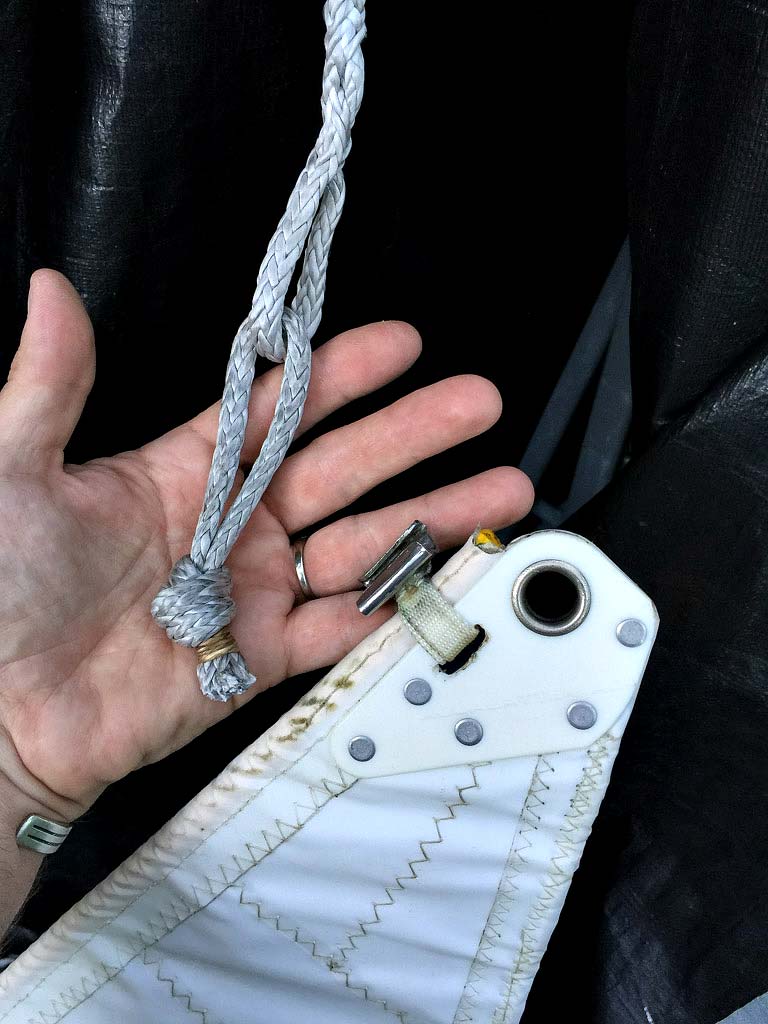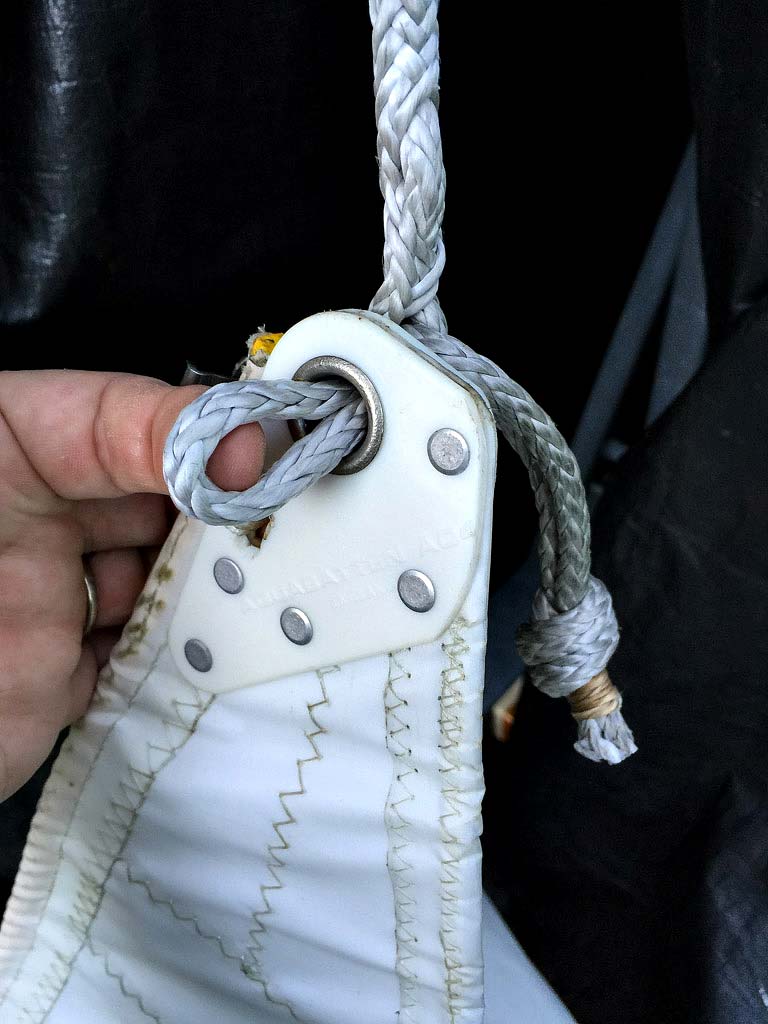 Soft Shackle made, ready to attach.
Soft Shackle made, ready to attach.
Earlier, I replaced the old Main and Jib Halyards with new ones made of Dyneema. Very nice. They’re slippery through the blocks and feel good in the hand. The first time I raised the Main, though, it was obvious the eye and carabiner arrangement, thrown together so quickly, was sub-optimal. Their combined length made the sail stop several inches short of fully raised. This left the sail hanging too long down at the deck – there was not enough sail track on the mast to pull the luff nice and tight. It worked, but not right.
Fixing it creates an opportunity to try something new – a Soft Shackle.
I can’t remember where I first came across this idea. Steve showed a simple way to splice an eye in Dyneema on his blog, which I’ve used several times already (thanks Steve!). Somewhere I stumbled onto the the concept of making a working shackle, integrated with the eye splice, out of the same stuff. I won’t post details – google it and you’ll find scores of sites showing the whole process – but know that it’s quick and easy.
Why bother?
Well, two reasons: cost and, more importantly, weight.
I had extra line left over from making the halyard. Hanks too short to be much good for anything else. Being parsimonious and true to my Scotch heritage, I don’t throw anything away. That means anything I make of these scraps are essentially free. Doesn’t get much cheaper than free.
Furthermore, this Lightning has a 25′ mast (26′ total above the keel). The stainless steel carabiner I was using as a shackle weighs 3oz. Doesn’t seem like much. But roughly speaking, 3oz of weight at the end of a 25′ stick equates to 30oz of force. That means the little metal shackle hanging at the top of the mast is essentially equivalent to nearly 2 pounds of weight. Crazy! That’s an extra 2 pounds every time if have to raise the mast, 2 pounds waving around wildly at the top of the mast in a rough sea. The Soft Shackle, by comparison weighs in at a mere 5 grams. Less than 1/20th the force and weight of the metal shackle.
 Former stainless steel carabiner shackle.
Former stainless steel carabiner shackle.
 Eye splice in the halyard, captive shackle loop with stopper knot.
Eye splice in the halyard, captive shackle loop with stopper knot.
Took about 15 minutes to make. The headboard of the sail will now hoist all the way to the sheave at the top of the mast.
You can make a fancy stopper knot if you like. I just tied in a simple overhand knot. Ideally, you want the knot to be bigger than the hole in the grommet through which it might pull. But there’s a lot of latitude. The thickness of the loop coming through the grommet, due to the size of the line I’m using, takes up half the space, so the knot is not so important.
it’s quick and easy to attach the sail. A big advantage, for me, is it’s also easy to attach and release in the dark by feel – something I found frustrating with the original lightweight Sailrite shackle on the old wire halyard.
 Eye inserted through the sail grommet, ready for the shackle.
Eye inserted through the sail grommet, ready for the shackle.
 Shackle in place, sail ready to hoist.
Shackle in place, sail ready to hoist.
Another advantage of these Soft Shackles is they are, well, soft. That makes them well suited to places where having a normally heavy and hard object flapping around your head would be a bad thing. For example, at the clew of the Jib.
So I will replace the heavy bronze shackle and block combination on the Jib, as well. It’s esthetically nice to look at in an old fashioned sort of way I appreciate; but I only had to get cracked in the skull by that once when the Jib was flogging to realize there’s more than one way to define “esthetics”.
By removing the old troublesome wire halyard and other metal hardware, I’ve probably reduced the force needed to the mast by more than 7 pounds. Enough that I can feel the difference. And this works and feels better, too.

